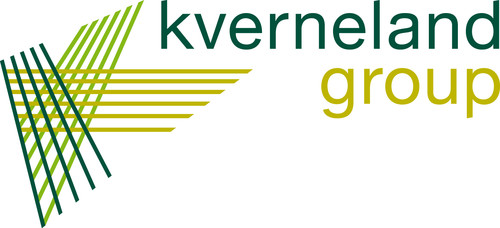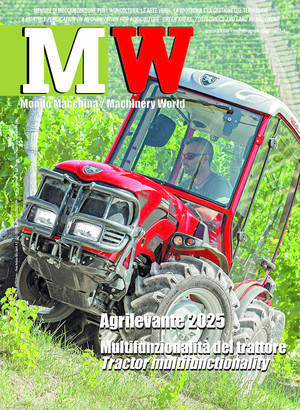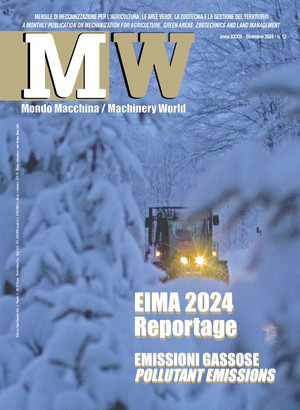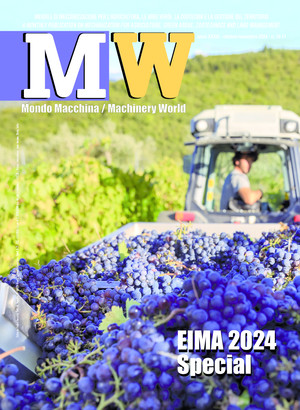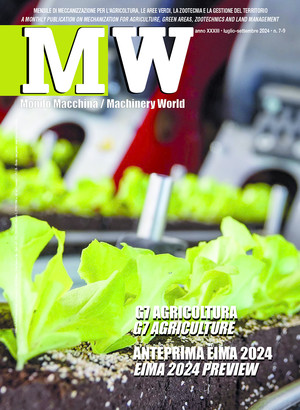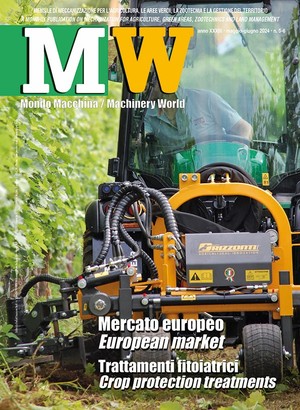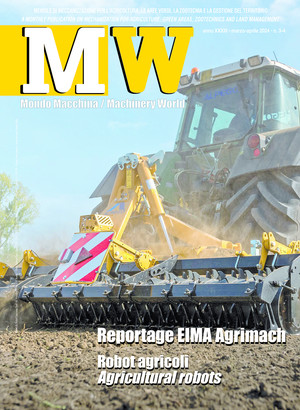
Tires, growth prospects for 2025
According to analysts and industry associations, the global tire market is expected to reach 7 billion dollars this year, marking a +5.1% increase over 2024. Europe will also see increases reach USD 2.3 billion. The trends for the near future
The agricultural vehicle tire race seems to be just beginning. A recent analysis by the Mordor study center sets some guideposts. The size of the global market in 2025 is estimated to be close to USD 7 billion (EUR 6.91 billion) with significant margins of growth and an annual growth rate of 5.1% which should bring the global market to within a step of USD 9 billion (EUR 8.87) in 2030. The trend does not change if the scope of the assessment is limited to the European market. Mordor's estimates for the continent hit at around USD 2.3 billion in 2025. Thta figure should exceed USD 3 billion in 2030, with an annual growth rate also in this case above 5% (5.32%).
Europe on the rise. Such rosy prospects are confirmed by current events and data from the European Tyre and Rubber Manufacturers' Association (Etrma), whose regular beginning of the year forecast provides the numbers for the market of the "old continent". After a particularly negative 2023, the European market returns to positive territory (+5%) in 2024 thanks in particular to an effervescent fourth quarter (+12%) (see table). Etrma - which groups together Apollo Tyres, Bridgestone, Continental, Goodyear, Hankook, Michelin, Nexen Tire, Nokian Tyres, Pirelli, Prometeon, Sumitomo Rubber Industries, Toyo Tires, and Yokohama - shows how 2024 closed with overall sales of 716,000 replacement tires compared to 682,000 in 2023. This positive data was shared across all product lines and, according to Adam McCarthy, general secretary of Etrma, was especially favorable in the case of the agricultural sector due to particular weather conditions inducing purchases in nearly all of Europe. According to Mordor's assessment, the aftermarket tire segment will gain even more weight thanks to relatively lower prices compared to original equipment and the greater possibility of tire customization.
Future trends. But what will drive tire development? Bkt, an Indian multinational that has become an Off Highway market leader in just the last few years, outlined a possible scenario. The Mumbai-based company, whose European headqurters are located in Seregno, Italy, says there are five trends that will guide the future of tires. First of all, the eco-sustainability of the materials, given the growing attention towards biodegradability and recycling. Tire manufacturers will follow this trend by focusing more on the use of materials such as natural rubber or recycled compounds to reduce their environmental footprint. Tire design will also comprehend the need to improve fuel efficiency and, thus, lower emissions.
Then there is the huge, largely unexplored matter of integration with the Internet of Things (IoT). New generations of tires will be progressively equipped with IoT sensors for real-time communication of data relating to pressure, wear, and performance, even preventing the need for repairs in order to reduce machine downtime. Bkt goes further and predicts the use of sensors capable of providing important information on soil conditions, temperature and load, with a view to optimizing overall performance and agricultural yield.
We cannot ignore the durability and longevity that can be obtained with new generation compounds and with a tread and sidewall design optimized to extend the life cycle of the product and its ability to be used in the greatest possible number of agricultural practices. On the production front – according to the scenario hypothesized by Bkt – we will see the progressive expansion of cutting-edge techniques, such as 3D printing, capable of significantly accelerating the time-to-market of tires and increasing customization, responding in a targeted manner to the specific needs of individual operators.
The deal is clinched by customization and adaptability in the form of increasing flexibility and modularity, which will be able to easily adjust the characteristics of the tire based on seasonality, type of application and field conditions. Hybrid tires will also gain ground and will be able to handle a wider range of agricultural tasks, favoring greater versatility.
These plausible and noteworthy trends should be integrated with increased economic accessibility, since in times of limited margins in the countryside, agricultural tires have to remain a means of production and not a luxury.

